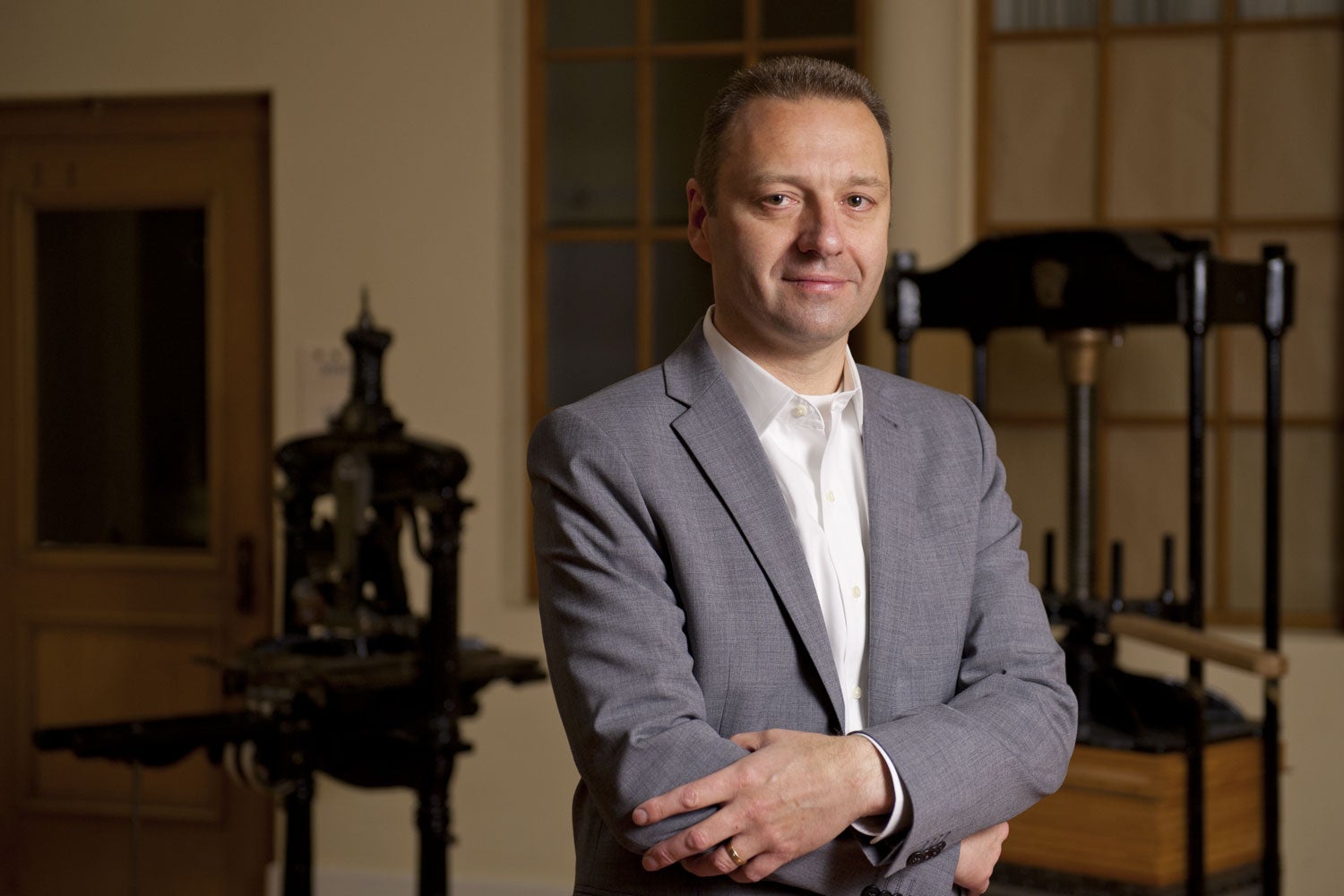Stanford University Press is redefining the world of traditional academic publishing through an innovative publishing program.
Go to the web site to view the video.
The press was the first academic publishing group to offer scholars a way to publish and peer review academic research that involves digital tools not usually found in online journals. The idea for the program, launched last year with the help of a $1.2 million grant from the Andrew W. Mellon Foundation, came out of press director Alan Harvey’s desire to “break the box of publishing.”
“I wanted to push against all of the boundaries,” said Harvey, who has overseen several digital initiatives in his 15 years at the press. “We were already doing innovative online work and planned to do more.”
Past meets present
Since the 17th century, scholars have traditionally published their academic findings and analysis in a written or print format. A rigorous peer-review process and a network of respected academic journals and societies evolved to vet that scholarly work.
With the advent of the internet, academic publications, like other formerly print-only material, were digitized and transferred online, but these publications continue to be static text or images like the original print versions.
The type of research the press’s initiative showcases does not have roots in print. These works are digital-only productions, applying techniques such as interactive data mapping, narration and slideshows to bring the research to life.
Until the kickoff of the press’s digital publishing program in 2016, scholars were unable to publish these unique, interactive academic works and have them undergo the rigorous peer-review and professional publishing process that printed works receive. Digital works like these often resided on a researcher’s personal website or other online platforms devoid of academic review.
Tom Mullaney, an associate professor of history at Stanford, is currently going through this process with his new digital project.
“Working with Stanford University Press has been tremendous,” Mullaney said. “This is an initiative that not just any press, however prestigious, can undertake and execute as precisely and with as much vision as this press has.”
Mullaney’s project, The Chinese Deathscape, integrates interactive maps with accompanying scholarly analysis, examining the spatial relocation of graves in China over time. Mullaney’s work, scheduled to be published in spring 2018, is one of six digital-only projects the press plans to release in 2018 and 2019.
Those projects will join Enchanting the Desert, the first interactive project the press published in 2016. The work, authored by former Stanford postdoctoral scholar Nicholas Bauch, is a book-length examination of more than 40 landscape photographs and audio narrations included in acclaimed photographer Henry G. Peabody’s 1905 slideshow of the Grand Canyon.
‘A fabulous challenge’
Stanford University Press, which annually publishes more than 100 books from a variety of scholarly fields, is no stranger to innovation. It was one of the first publishing presses to start offering e-books in the 1990s.
But the digital publishing program proved to be a new kind of effort, Harvey said.

Alan Harvey is director of Stanford University Press. (Image credit: L.A. Cicero)
“We ended up doing something very, very hard,” he said. “We realized that the broad infrastructure that supports regular academic book publishing doesn’t exist at all for the digital environment – from marketing to copyright registration to archiving. We have to invent it all from scratch, and that’s a fabulous challenge.”
The press’s staff developed a peer-review process specifically for interactive projects. Each project is assessed by three to four of the author’s peers who provide objective, independent evaluations. Some are specialists on the project’s subject and others are technical and visual experts. The feedback includes suggestions for the research and analysis, but also for the interface and online accessibility of the digital product.
“So far, it’s been a closer process than it has been in the print world,” said Friederike Sundaram, an acquisitions editor for digital projects at the press. “We go back and forth to really create a publication that fits our needs as publishers as well as the author’s needs as scholarly communicators.”
The press, in a partnership with Stanford University Libraries, has also been exploring how to copyright the interactive works and ensure that they are archived and accessible in the future despite the constantly changing online environment.
“A publication really becomes a valid academic publication through its longevity,” Harvey said. “If we were to be publishing these and having them go dead within two years, that really wouldn’t serve the purposes of the academic community. We want them to have the same kind of permanence as a print publication.”
In addition to those challenges, Harvey’s team also spends time scouting for the right types of projects, sifting through proposals and educating scholars and academics about the possibilities of digital scholarship.
“Because scholars usually don’t think of their interactive digital projects as possible publications, I spend a lot of time finding projects with potential and working with authors to develop them, review them and complete them for production,” Sundaram said. “It’s gratifying to see that scholars are jumping on the opportunity to work with us.
“Some scholars are also apprehensive. We are the only publisher building such a program, and for authors deciding to go this route means putting a substantial amount of time and effort into something that still needs to be formally accepted.”
Pioneering is not easy, but the press’s team has embraced the challenge.
“The goal here is that this isn’t only a learning opportunity for Stanford University Press,” Harvey said. “This is a learning opportunity for all of scholarly publishing.”
Media Contacts
Alex Shashkevich, Stanford News Service: ashashkevich@stanford.edu, (650) 497-4419